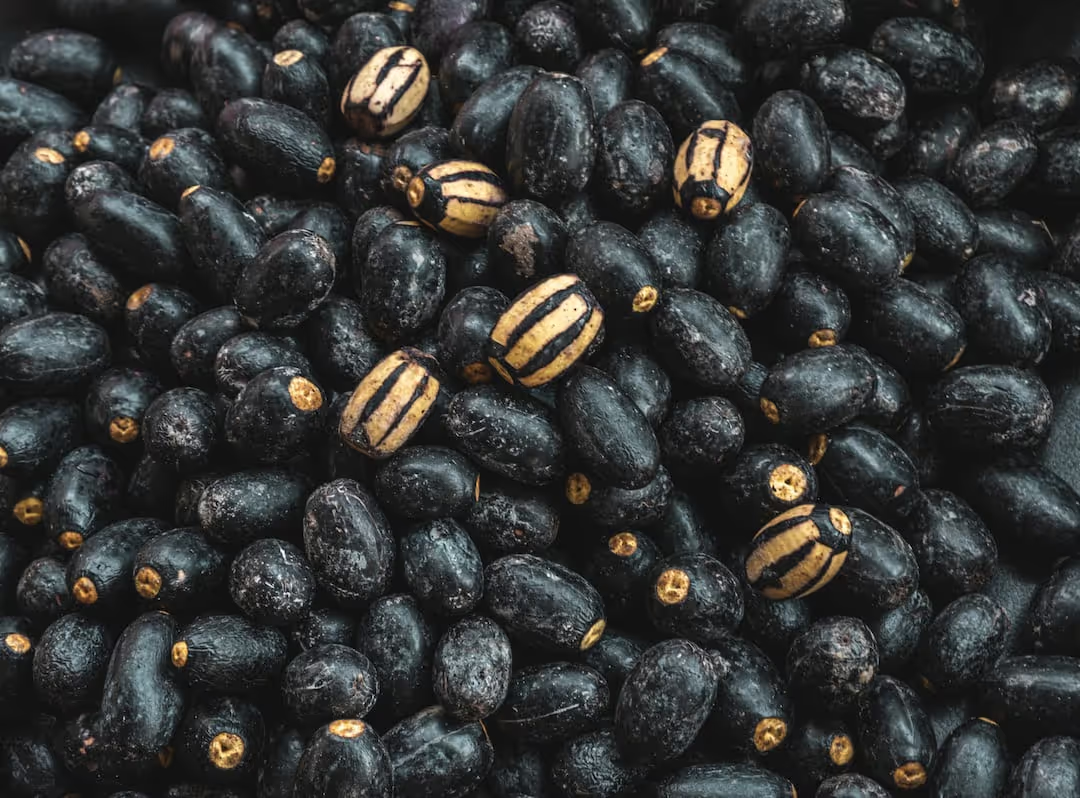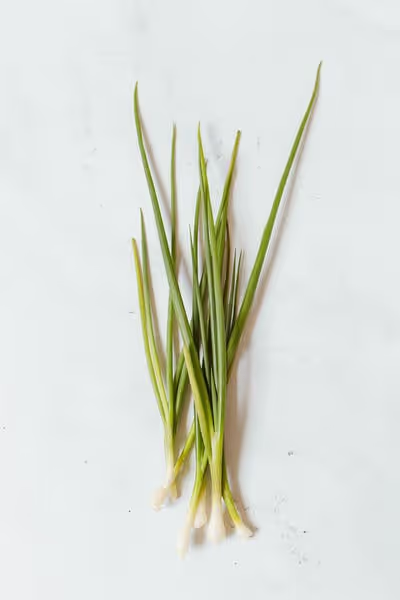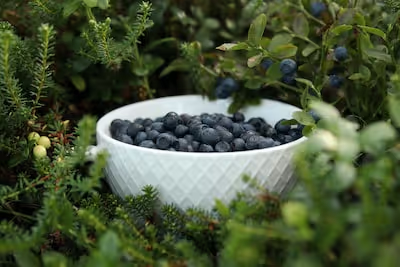Growing Black Beans for a Healthy and Flavorful Harvest

Growing Black Beans
Growing black beans delivers tasty, protein-packed legumes straight from your garden to your plate. Start by planting them in warm, well-drained soil after the last frost, giving each seed enough room to stretch and thrive. With consistent watering and full sun, you'll soon reap baskets of glossy, nutrient-rich beans—keep reading to learn simple tips for a bountiful crop.
Cheatsheet: Grow Black Beans Like a Pro
🌱 Soil & Site
- Full sun (6+ hrs/day)
- Well-drained, loamy soil (pH 6-7)
- Soil temp 65-75°F (18-24°C) for sowing
- Add aged compost
🕒 Planting Timeline
- Direct sow after last frost
- Space seeds 2 in (5 cm) apart, 1-2 in (2.5-5 cm) deep
- Rows 18-24 in (45-60 cm) apart
- Days to maturity: 80-100
💧 Water & Care
- Mulch to retain moisture
- Water: 1 in (2.5 cm) per week
- Avoid overhead watering
- Fertilize lightly (high-nitrogen inhibits beans)
- Weed gently; shallow roots
🔍 Pests & Issues
- Watch for aphids, bean beetles
- Rotate crops yearly
- Prevent mold with airflow
✂️ Harvest & Storage
- Pick pods when dry, rattling (plants yellow)
- Shell beans from pods
- Dry beans further: 1 week in a cool, dry spot
- Store airtight; lasts 12+ months
🍴 Nutrition & Self-Sufficiency
- Rich in plant protein & fiber
- Iron, magnesium, folate powerhouse
- 1 cup cooked = 15g protein
- Homegrown for 100% traceability
🛠️ Tools and Products You'll Need
- Hoe or hand cultivator
- Mulch (straw or leaf litter)
- Compost
- Quality black bean seeds
- Garden gloves
- Watering can or drip hose
- Harvest basket
- Prepare soil with compost; ensure full sun exposure.
- Sow seeds after frost, spacing as above.
- Water consistently; mulch to reduce weeds.
- Monitor for pests; remove gently by hand if needed.
- Harvest when pods are dry; shell and cure beans before storing.
-
Growing Black Beans: flavor, nutrition, and a soil-building workhorse
I grow black beans to eat better and to leave the soil richer than I found it. They reward a little planning with a pantry full of ink-dark, meaty beans that taste like rain on hot soil after a long day.
Quick-start essentials for Growing Black Beans
- Soil temp: plant after the last frost at 60 to 65 F, 15.5 to 18 C.
- Spacing: 2 to 3 in apart, 5 to 8 cm; rows 18 to 24 in, 45 to 60 cm.
- Depth: 1 to 1.5 in, 2.5 to 4 cm.
- Water: 1 in per week, 25 mm, especially at bloom and pod fill.
- Days to maturity: 90 to 105 days for dry beans, depending on variety and heat.
Why black beans belong in every rotation
Phaseolus vulgaris fixes atmospheric nitrogen with the right Rhizobium inoculation, leaving fertility behind for the next crop. I see greener corn the year after a bean block, and my soil test N ticked up enough to trim fertilizer by a third.
“A 1 cup serving of cooked black beans provides roughly 15 g protein and 15 g fiber.” USDA FoodData Central; beans also supply folate, iron, and potassium.
Site, soil, and heat: set the table for success
Give beans full sun and a loose, well drained loam with pH 6.2 to 7.2. Heavy clay can work if you add compost and form raised beds that shed spring water.
I plant only after the soil thermometer reads 60 F, 15.5 C at 2 in, 5 cm depth for three mornings in a row. I learned the hard way when a cold snap at 48 F, 9 C stalled germination and invited rot.
Fertility that favors nodules over leaves
Skip high nitrogen fertilizer or you will grow vines instead of pods. I side-dress with 2 to 3 lb per 100 sq ft of a low N, high K organic blend, 1 to 1.5 kg per 10 m², or match extension P and K recommendations from a soil test.
Dusting seed with a peat-based bean inoculant takes 60 seconds and pays all season. UC ANR notes that inoculation boosts nodulation and can raise yields in soils lacking the right strains.
Seed and variety choices that actually matter
I have trialed over a dozen lines and keep a short, reliable list. Bush types stay tidy and finish evenly, while semi-vining strains push yield if you have space.
Top varieties for Growing Black Beans
- Black Turtle: classic, forgiving, 90 to 95 days; pods dry uniformly and thresh clean.
- Midnight Black Turtle: very uniform seeds, great for storage cooking, 95 to 100 days.
- Zorro: upright rows, strong disease package from commercial breeding, 95 to 100 days.
- Black Coco: big seeds, doubles as a shelling bean, 85 to 90 days in warm summers.
- Cherokee Trail of Tears: pole habit, smaller seeds, remarkable flavor, 100 to 110 days if trellised.
Buy certified disease-free seed and keep a fresh lot on hand, because vigor fades in year three. A packet costs about 3 to 5 dollars in the U.S. or 3 to 5 euros for 50 to 100 seeds.
Planting technique: simple, but precise
Direct sow only, since transplants sulk and never catch up. I run a shallow furrow, water it once, then sow into moisture and pull dry soil over the top to prevent crusting.
For bush beans, I use a double row on a 30 in, 75 cm bed, rows 12 in, 30 cm apart. That canopy closes fast and starves weeds of light by week four.
Water strategy that avoids disease
Give 1 in, 25 mm weekly during bloom and pod fill, then taper to almost none as pods dry. Overhead watering in hot afternoons encouraged white mold for me, so I switched to drip tape with 12 in, 30 cm emitters.
Weed control without the drama
Beans hate early weed pressure more than late. I flame a stale seedbed 3 to 5 days before sowing, then use a stirrup hoe twice before first bloom.
Temperature swings, flowers, and pod set
Beans set best between 70 and 85 F, 21 to 29 C. Prolonged heat above 95 F, 35 C can stall bloom, so a thin shade cloth rated 15 to 30 percent saved my August crop more than once.
A mild potassium boost at early bud helps keep pods uniform. I use kelp-based foliar only if a soil test shows K borderline.
Pest and disease playbook that actually works
I walk rows twice a week, coffee in hand, and that habit prevents 80 percent of grief. Extension bulletins from Cornell and Iowa State echo the same idea: early detection beats heroics later.
Common culprits
- Mexican bean beetle: lacy leaves and yellow larvae clusters; hand-crush early or deploy floating row cover at emergence.
- Aphids and mites: sticky honeydew or stippled leaves in hot spells; a hard water spray and predatory mites can reset the balance.
- Bean weevil: shows up in storage; freeze finished beans at 0 F, minus 18 C for 3 days to break the cycle.
- Anthracnose, bacterial blights: seedborne; start with clean seed, avoid working wet plants, and rotate 3 to 4 years away from legumes.
- White mold: dense canopies and overhead irrigation invite it; widen rows slightly and irrigate early morning if you must sprinkle.
“Rotate dry beans at least 3 years away from other beans to reduce disease pressure.” University extension guidance aligns across multiple states.
Harvest, curing, and the music of dry pods
For dry beans, I wait until 80 percent of pods turn tan and rattle. If rain threatens, I pull whole plants, bundle with twine, and hang under a porch roof for 7 to 10 days.
Threshing can be low tech and satisfying. I bag pods in a clean tarp, dance for a minute, then winnow in a box fan breeze like I learned from an old seed-saving mentor.
Moisture targets and storage
Beans store safely near 13 percent moisture. If you do not own a grain moisture meter, bite a seed; if your teeth dent it easily, keep drying until it snaps clean.
Store in airtight jars with oxygen absorbers or food-grade buckets with gamma lids. I label with year and variety because flavor peaks in year one and two.
Cooking, nutrition, and food safety you can trust
I simmer black beans low and slow without much fuss, and I salt midway for creamy skins. Soaking shortens cook time by 30 to 40 percent and may improve digestibility, per USDA and food science texts.
Always cook dried beans thoroughly to neutralize lectins, keeping a hard boil for the first 10 minutes before a gentle simmer. Kidney beans carry the highest lectin risk, yet I give black beans the same respect in the pot.
Yields you can plan around
Expect roughly 1 to 2 lb of dry beans per 10 ft of row, 0.45 to 0.9 kg per 3 m, with decent fertility and weed control. Commercial fields average 1500 to 2500 lb per acre, 1680 to 2800 kg per hectare, depending on weather and disease, according to USDA and university extension reports.
Rotation, cover crops, and soil texture that spark resilience
I follow black beans with garlic or brassicas to cash in on residual nitrogen. A winter cover of cereal rye and crimson clover keeps the bed crumbly and trafficable by spring.
Companions that pull their weight
Sweet corn and pole beans can partner if you plan spacing, yet most black bean cultivars are bushy and prefer their own row. I tuck in marigolds at row ends for pollinator traffic and easy visual markers.
Buying guide: gear that has earned a place in my shed
- Soil thermometer: a simple analog probe, 10 to 20 dollars or euros, saves entire plantings.
- Peat-based bean inoculant: OMRI-listed, 5 to 8 dollars or euros per season’s seed.
- Drip kit: 50 to 120 dollars or euros for small beds; 12 in, 30 cm emitter spacing fits beans well.
- Stirrup hoe: 6 to 8 in head, 40 to 70 dollars or euros, makes fast work of thread-stage weeds.
- Floating row cover: 0.55 oz fabric for beetles and wind abrasion; 20 to 40 dollars or euros for a medium bed.
- Grain moisture meter: 30 to 50 dollars or euros, optional yet addicting for dialed-in storage.
- Food-safe buckets and jars: airtight, labeled, boringly reliable.
FAQ that untangles common questions
Can I grow black beans for fresh pods too
Yes, pick pods when seeds fill but skins still give slightly and treat them like shelling beans. Flavor lands between sweet corn and cocoa on a rainy day if you nail the window.
Do I need to inoculate in soils that have grown beans before
Maybe not, yet I still do because the cost is tiny and the payoff large in cool springs. University trials often report yield bumps where native rhizobia are inconsistent.
How do I prevent lodging in storms
Select upright varieties like Zorro and keep nitrogen modest. A light hilling at 4 to 5 weeks helps anchor stems in sandy soils.
Can I mulch beans
Yes, after the soil warms, I side-mulch with chopped straw to hold moisture and reduce splash. Early mulching on cold soils can slow growth, so wait until the first true trifoliate leaves expand.
Top 7 mistakes to skip in Growing Black Beans
- Planting into 55 F, 13 C soil and wondering why half the seed rots.
- Heavy nitrogen that grows leaves at the expense of pods.
- Skipping early weed passes and losing yield before you see pods.
- Overhead watering during bloom that sets up white mold.
- Harvesting pods too green and fighting storage mold later.
- Storing warm beans in paper bags that invite weevils.
- Breaking rotation and dragging last year’s disease into a new bed.
Alternatives and companions in the dry bean family
If your season is short, try Soldier, Jacob’s Cattle, or Navy beans at 80 to 90 days. For heat, Azufrado and small red beans keep setting when August feels like a kiln.
Numbers that make Growing Black Beans even sweeter
Producing 1 kg of legumes emits under 1 kg CO2e on average, while beef sits near 60 kg CO2e per kg edible product. Poore and Nemecek, Science, 2018.
Feeding a family on a patch of beans feels subversive and practical at the same time. The soil gets better, the pantry gets fuller, and the food tastes like you worked for it.
Field notes I keep taped to the seed bin
- Sow after three warm mornings in a row and a forecast without cold rain.
- Inoculate every time unless you grew beans in that bed last year and saw strong nodules.
- Hoe twice before bloom, then stop and let roots own the row.
- Water on calm mornings so foliage dries fast.
- Harvest when pods rattle, cure fully, freeze three days, then stash deep.
Trusted references worth reading
- USDA FoodData Central on black bean nutrition.
- University extension bulletins from Cornell, Iowa State, and UC ANR on dry bean production and disease management.
- Science, Poore and Nemecek 2018 on food system emissions and legumes.
Frequently Asked Questions About Growing Black Beans
What soil conditions do black beans prefer?
Black beans thrive in well-drained, fertile soil that maintains a neutral to slightly acidic pH between 6.0 and 7.0. Enrich your planting area by incorporating organic matter like compost or aged manure to promote vigorous growth.
How much sunlight do black bean plants need?
Black beans require full sunlight and flourish with a minimum of 6 to 8 hours of direct sun daily. Selecting a planting location that offers consistent sun exposure ensures optimal plant health and harvest.
When is the ideal planting time for black beans?
Plant black beans outdoors after all danger of frost has passed and the soil temperature consistently reaches at least 60°F (15°C). In cooler climates, starting them indoors can give you a head start before transplanting into the garden.
How should I space black bean seeds when planting?
Plant bean seeds about 1 inch (2.5 cm) deep, spacing them approximately 4 inches (10 cm) apart in rows set 18 to 24 inches (45 to 60 cm) apart. Proper spacing provides sufficient airflow and room for growth, encouraging healthy plants.
What watering techniques work best for growing healthy black beans?
Consistent yet moderate watering suits black bean plants best—aim to supply around 1 inch (2.5 cm) of water per week, factoring in rainfall. Water directly at soil level to prevent leaf diseases and maintain evenly moist soil without waterlogging.
How long does it take black beans to mature?
From planting to harvest, black beans typically mature within 90 to 110 days. Beans are ready for picking once pods have dried, turned brown, and seeds inside feel hard when pressed.
Are black bean plants susceptible to common pests or diseases?
Black bean plants may occasionally encounter pests such as aphids, bean beetles, or spider mites. Regular inspection and early intervention with organic methods, such as neem oil or insecticidal soap, effectively manage infestations. To prevent fungal diseases, practice crop rotation and water carefully at the base of the plants.
Can black beans be grown successfully in containers?
Yes, black beans adapt well to container gardening. Choose containers at least 12 inches (30 cm) deep and wide with drainage holes, filled with nutrient-rich, well-draining potting mix. Position containers in full sun and maintain consistent moisture for best results.
Growing Black Beans puts you in touch with the real grit of gardening—sun on your back, hands in the dirt, and a harvest that brings both nutrition and deep flavor to the table. Give these plants warmth, well-drained soil, and steady moisture, and they’ll reward you with pods packed full of protein and possibility. Rotate crops to keep the soil healthy, and don’t forget to let the plants dry out before picking for the best flavor and storage. If you’re hooked on legumes, you might enjoy growing azuki beans too. In the end, the humble black bean stands as proof: simple care, honest work, and a little patience can fill your bowl with something unforgettable.
Organic Grower's Guide to Exceptional Black Bean Harvests
Soil Enrichment Practices
- Incorporate cover crops (clover, radish, rye) to boost soil nitrogen organically before planting beans.
- Mix compost tea monthly to deliver microorganisms that unlock nutrients, improving black bean vitality.
- Add biochar (wood charcoal) at a ratio of 10% by volume for improved moisture retention and microbial growth.
Beneficial Companion Crops
- Combine black beans with corn and squash (the traditional three sisters planting) to boost crop yield by up to 30% through symbiotic nitrogen, shade, and pest prevention.
- Interplant marigolds to repel destructive nematodes, curbing pests without chemicals.
Organic Pest Prevention
- Position bird baths or perches near fields to attract pest-consuming birds such as swallows and chickadees.
- Regularly dust bean foliage with food-grade diatomaceous earth as a barrier against beetles and aphids.
- Apply neem oil diluted to manufacturer specifications bi-weekly to prevent fungal issues and insect attacks.
Watering Techniques for Maximum Yield
- Implement drip irrigation lines, maintaining consistent moisture levels (~1 inch/2.5 cm of water weekly).
- Apply mulch (straw, shredded leaves, grass clippings) in a 2-inch (5 cm) layer to limit evaporation and weed growth.
Harvesting & Storage Best Practices
- Harvest black beans when pods are fully dry, brittle to the touch, and beans rattle inside for optimal nutrition and taste.
- Store dried, shelled beans in airtight glass or ceramic containers in cool, dry conditions (55–60°F /13–16°C, <60% humidity) to maintain protein, fiber, and vitamin content for up to 2 years.
Nutritional Highlights of Homegrown Black Beans
- Homegrown organic black beans contain significant amounts of antioxidants—anthocyanins and flavonoids—linked to reduced inflammation, improved heart health, and strengthened immune function.
- Regular dietary inclusion boosts daily fiber intake, supporting gut health, digestion, and blood sugar control.
- One cup (172g cooked) provides approximately 15g protein, 15g fiber, and essential minerals like iron, magnesium, and potassium, ideal for plant-based, sustainable diets.
Find out which plants will thrive in your garden!
Answer a few fun questions and get custom plant recommendations perfect for your space. Let’s grow something amazing together!

start your season






